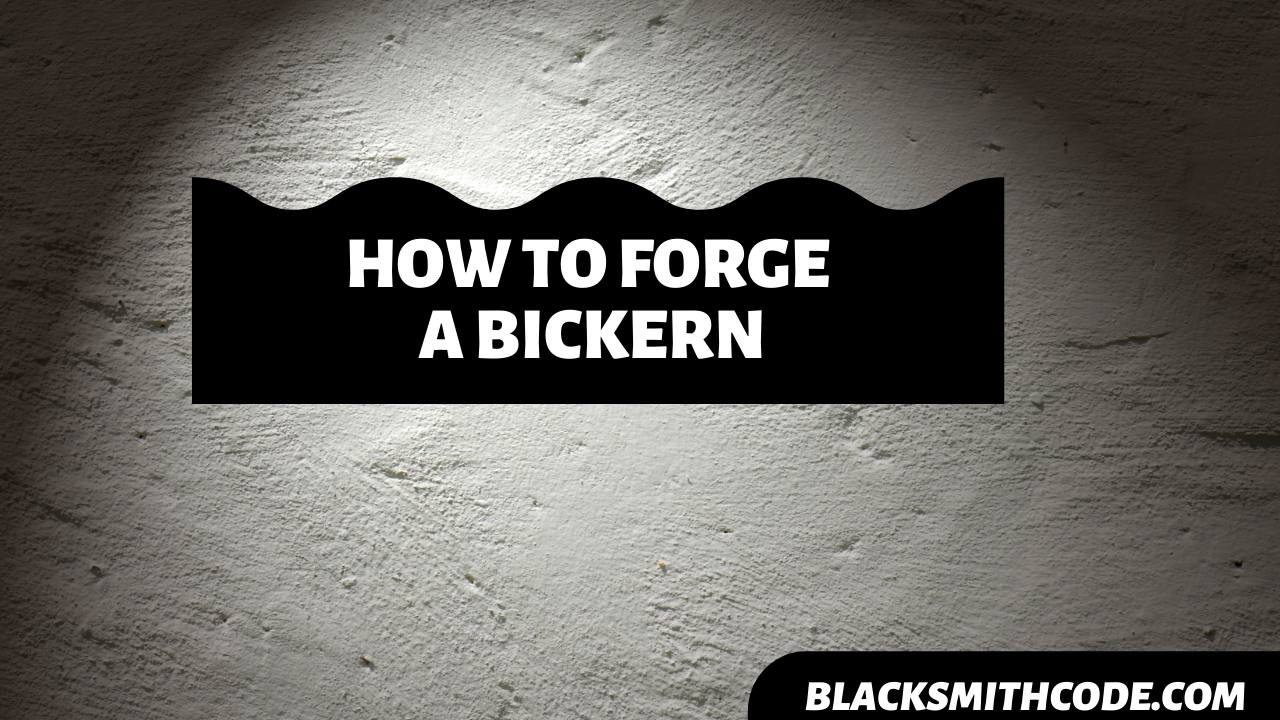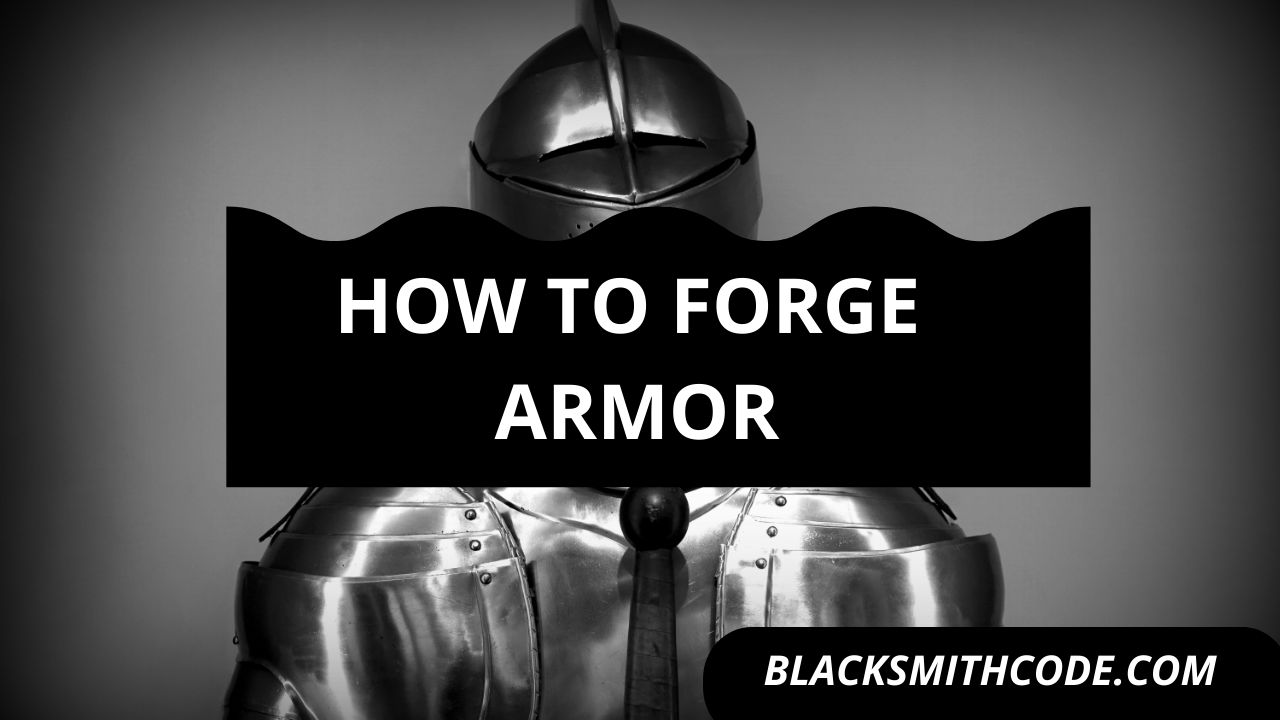Do you know you can forge your blacksmithing tool and save a lot of money? A bickern is one of the most utilized blacksmithing tools. It is otherwise known as a block anvil or a Viking anvil. So, learning how to forge a bickern is great, considering its use.
A bickern is simply an anvil with dual taper ends. It is a portable tool that is efficient for working on smaller projects. It is a chunk of steel with a flat top and two tapered edges for you to work on.
Looking at a bickern from a distance might make it appear like it is difficult to forge. In the actual sense, the tool’s forging process is not as complicated as most people take it to be. You would certainly get more value from the tool compared to the stress involved in the process.
If you intend to learn how to forge a bickern, then you don’t need to look any further. The detailed steps below will guide you through the entire process. Understanding this process and following it will make the process hassle-free.
Instructions on How to Forge a Bickern
Step 1: Get Your Materials
The materials you use for the forging process of a bickern is crucial in determining the ease of the process. It is preferable and relatively easier to use a steel bar for the process.
Get a steel bar of suitable length and width. Keep it in mind that the size of a bickern is quite small. Therefore, you don’t need a steel bar of massive size or extensive length.
Step 2: Measure and Cut
A bickern has two parts. The upper part and the lower handle. The upper part forms the working surface and the lower handle that forms the base.
Therefore, you have to measure and make precise cuts for each part. While measuring the upper part, remember to leave extra length for the tapering edges.
Step 3: Form The Head
Now, it is time to form the head of the bickern from the length you cut for it. Forming the head involves heating the material and beating it to shape.
Quick Steps
- Prepare your forge and heat the material to a workable temperature.
- Hold one end of the length with tong and hammer the other end to flatten it.
- Hammer it strategically to give you the desired edge.
- You can choose to leave the other edge in its square shape. You can also decide to round it or make it flat as well.
- Flatten and smoothen the side of the steel that would form the working top. It is essential to ensure the complete smoothness and flattening of this surface.
- Re-heat the material as often as they need for it arises.
Step 4: Form The Collar/Shoulder
The next part to be formed here is regarded as the shoulder of the bickern by some, while others call it the collar. It is the extended part of the base/handle.
Quick Steps
- Measure and cut the steel to form the handle.
- Select one part of the cut that would form the lower body.
- Heat that part in the forge till it reaches a workable temperature.
- Place it uprightly on the anvil and hammer down till the tip becomes flat and extended.
- Join the other half of the length to the flattened top.
- Use only a suitable joining technique that is convenient for you.
Step 5: Joining
Now, it is time to join the two parts that you have formed. Joining is a crucial part of forging a bickern that can make or mar the process.
You can either forge weld the two sides together or use other welding techniques. Ensure that the joint between the two parts is right at the center of the top.
The joint location of the bickern can influence its balance. Once you achieve this, you can pat yourself on the back before adding some finishing touches.
Step 6: Finishing
Except you are making the bickern for sale, you might not need any special finishing. You might not need any thorough annealing and hardening because the bickern is not designed to take heavy blows.
You can grind all the required parts to perfect its shape. Also, you can enhance the flatness and smoothness of the bickern top.
FAQs on How to Forge a Bickern
Question
Is bickern the same as a stump anvil?
A bickern has several names. It is otherwise known as stump anvil, Viking anvil, post anvil, or a block anvil. So, stump anvil is just another name for a bickern; therefore, they refer to the same tool.
Question
Can a bickern perform the function of a large anvil?
The design and size of a bickern are not suitable for taking hard strikes. It is only suitable for smaller projects and the forming of light projects. Consequently, there is absolutely no way you can replace your large anvil with a bickern. The size of each one confers them to playing different roles.
Question
What are the uses of bickern?
A bickern is suitable for working on a smaller project rather than using the large anvil. It is particularly useful for generally working on sheets. It is useful in making seams in flat and rolled sheets projects like containers and ventilation ducting.
Question
Is it possible to improvise a bickern?
Yes, it is possible to improvise a bickern with the use of materials like chunks of steel that takes the shape of an anvil. However, the improvised tool might not be as effective and functional as the actual tool.
Video on How to Forge a Bickern
Warnings
Take the necessary precautions and adhering to warnings will ensure your safety while working on this project. Aside from this, it will also improve the quality and outlook of your product. These warnings and precautions include;
- Ensure the use of gloves, aprons, and other protective gears.
- Take accurate measurements and only make precise cuts for each part.
- Handle all hot materials with care to avoid burns.
- Ensure proper ventilation and avoid clumsiness in the workplace.





